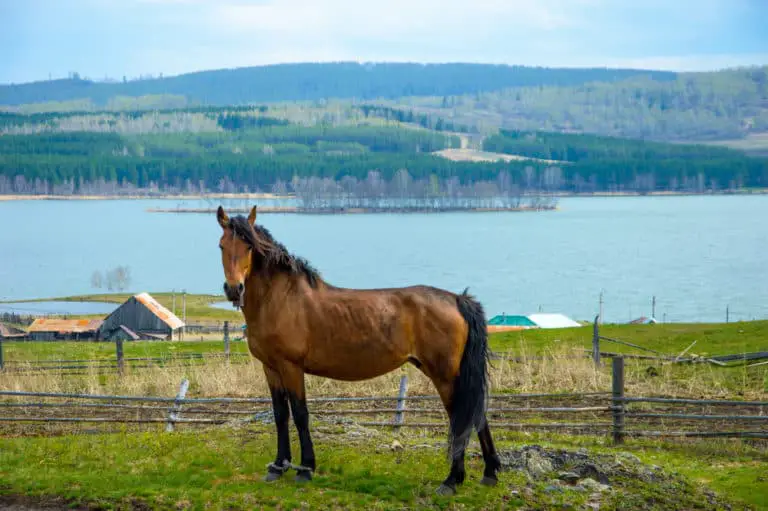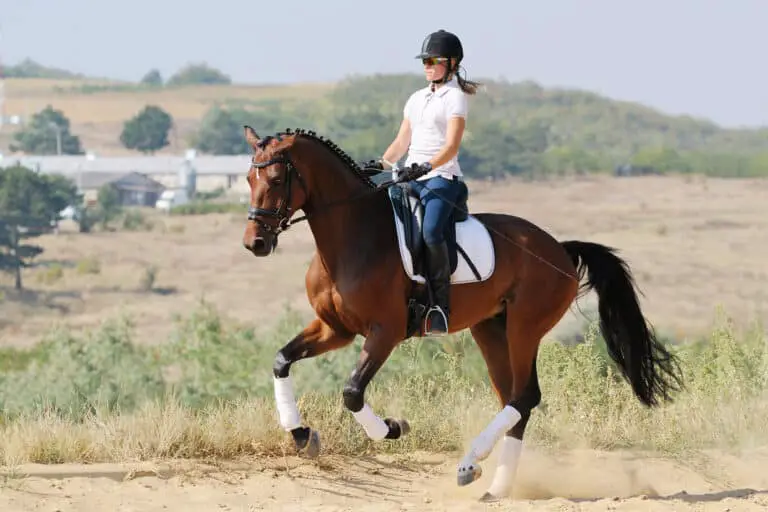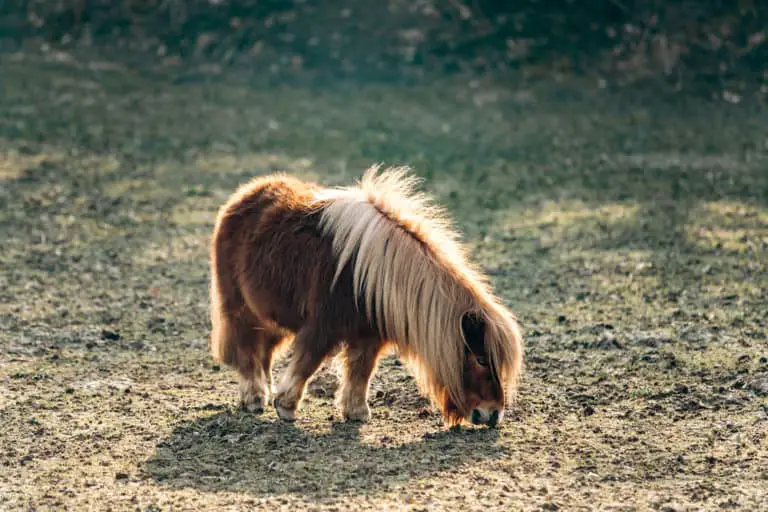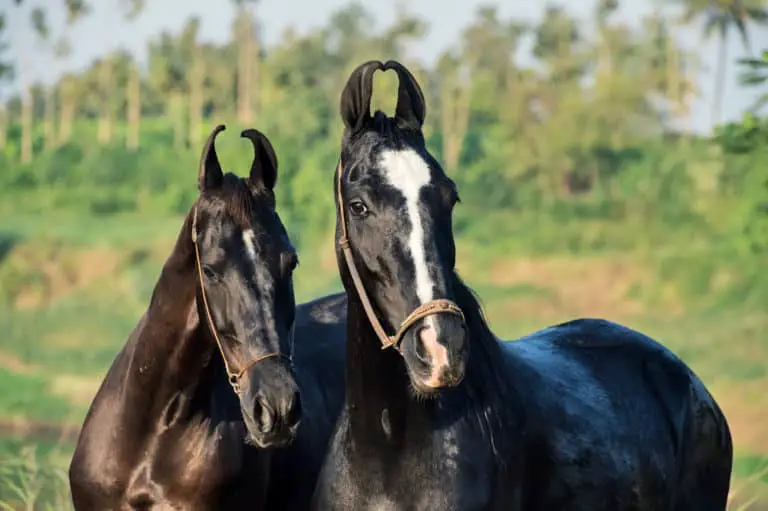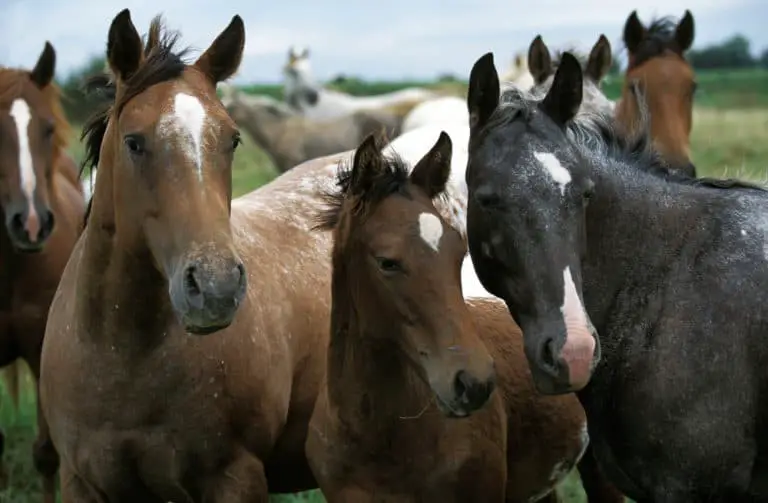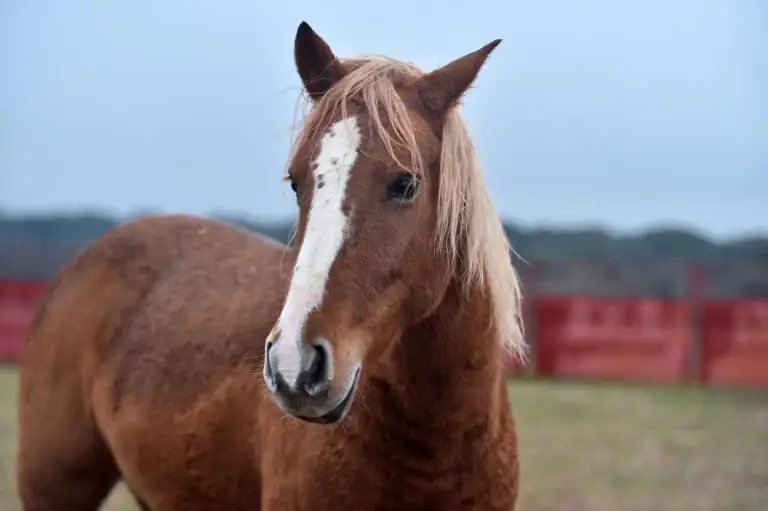Horse Industry Statistics in 2024 (Latest U.S. Data)

It’s no secret that horse riding is immensely popular among Americans. In addition to the joy of horse riding, the horse industry itself is a significant contributor to the American economy.
Here’s what the latest research tells us about the horse industry statistics.
Horse Industry Statistics
Highlights of horse statistics:
- The horse industry contributes $122 billion annually to the U.S. economy.
- The U.S. horse industry employs 1.74 million people.
- There are 7.25 million horses in the U.S.
- Texas has the highest horse population per state.
- 1.6 million households in the U.S. own horses.
- 60% of equestrians work in managerial positions.
- 50% of horse owners have an annual income of over $100,000.
- The average price of a riding horse is $3,444.
- The annual ownership cost of a recreational horse is $7,896.
1. The horse industry contributes $122 billion annually to the U.S. economy.
According to the American Horse Council Foundation’s 2017 horse economy study, an estimate of the total contribution of the horse industry to the U.S. economy is $122 billion annually. (1)
| Total Value Added to the U.S. Economy | Direct Contribution to GDP | Total Employment Impact | Direct Employment Impact | Number of Horses in the U.S. |
| $122 Billion | $50 Billion | 1,744,747 | 988,394 | 7,200,000 |
The horse industry produces goods and services of $50 billion as a direct economic impact on the U.S. economy.
Additionally, the industry contributes $38 billion in direct wages, salaries, and benefits.
This economic contribution directly affects other sectors in the economy and by combining these effects, the estimated total contribution of the horse industry to the U.S. economy is $122 billion annually.
States, where the horse industry contributes the most to the state GDP, are Kentucky (1%), Oklahoma (0.62%), and Florida (0.26%). (2)
Here’s a quick overview (2) of horse industries’ impact on GDP.
| Rank | State | Industry Share of State GDP | GDP Contribution from Horses (millions) | State GDP in 2016 (millions) | Total Number of Horses |
| #1 Highest | Kentucky | 1.00% | $1,941 | $195,035 | 238,000 |
| #2 Highest | Oklahoma | 0.62% | $1,109 | $178,970 | 252,700 |
| #3 Highest | Florida | 0.26% | $2,396 | $938,086 | 387,100 |
| #1 Lowest | New York | 0.08% | $1,206 | $1,540,970 | 154,000 |
| #2 Lowest | California | 0.11% | $2,813 | $2,665,349 | 534,500 |
| #3 Lowest | Illinois | 0.11% | $866 | $803,680 | 150,400 |
These numbers are interesting, as for example, the GDP of California, a state with the second-highest number of horses in the U.S., has one of the lowest GDP contribution shares from the horse industry.
At the same time, the GDP of Florida, a state with the third-highest number of horses, does rely more heavily on the horse industry.
2. The U.S. horse industry employs 1.74 million people.
The horse industry employment impact is bigger than it might seem at first glance.
According to the American Horse Council horse industry trends, the estimated total employment impact of the horse industry is 1,744,747 million jobs. (1)
| Total Volunteers | Total Employment | Direct Employment | Direct Wages |
| 1,370,000 | 1,744,747 | 988,394 | $38 billion |
It’s interesting to see that the jobs in the equine industry are in demand.
The horse industry has a direct employment impact of 988,394 jobs and contributes $38 billion in direct wages, salaries, and benefits.
Equestrian industry statistics also show that 1,370,000 people volunteer their time for horse-related activities annually. (3)
Interestingly enough, the horse industry directly employs more people than railroads, radio & television broadcasting, petroleum & coal products manufacturing, and tobacco product manufacturing. (4)
| Industry | Direct Employment in the U.S. |
| Horse Industry (1) | 988,394 |
| Tobacco Product Manufacturing (5) | 271,400 |
| Radio & television broadcasting (6) | 248,400 |
| Rail Industry (7) | 135,000 |
| Petroleum & Coal Products Manufacturing (8) | 101,600 |
3. There are 7.25 million horses in the U.S.
According to The American Horse Council (AHC), there has been some confusion in the past on exact U.S. horse population numbers. (9)
This is because there are three main organizations (National Agriculture Statistic Service (NASS), American Veterinary Medical Association (AVMA), and AHC) that collect and publish data regarding the U.S. horse population and each organization counts the numbers differently.
This is why AHC has combined the data from all the available sources and offers the latest, most precise overview of the horse population.
According to AHC equine industry statistics (2017), there are 7,246,835 horses (9) in the U.S, including both recreational and commercial horses.
Here’s a quick overview of the number of horses based on activities. (3)
| Activity | Number of horses | Percentage of horses |
| Recreational Horses | 3,141,449 | 43% |
| Showhorses | 1,227,986 | 17% |
| Racing and Racehorse breeding | 1,224,482 | 17% |
| Workhorses in Farms, Ranches, Police Work, Rodeo, Polo, etc. | 537,261 | 8% |
| Amish Institutionally Owned | 156,430 | 2% |
| Other | 959,227 | 13% |
| Total Horses in the U.S. | 7,246,835 | 100% |
According to USDA/National Animal Health Monitoring System, the Quarter horse (39.5%) and Thoroughbred Horse (10.2%) are the most popular horse breeds in the U.S. (10)
Interestingly enough, between 1992 and 2005, the breeds with the highest number of new horse registrations were the Quarter horse and the Paint horse.
| Horse Breed | Percentage of Population | New Breed Registrations (1991-2005) | Approximate Population (1998) |
| Quarter Horse | 39.5% | 2,844,273 | 3,487,850 |
| Thoroughbred Horse | 10.2% | 506,333 | 900,600 |
| Arabian Horse | 7.8% | 164,026 | 688,740 |
| Appaloosa Horse | 5.9% | 145,037 | 520,970 |
| Paint Horse | 5.4% | 663,512 | 476,820 |
| Draft Horse | 4.8% | – | 423,840 |
| Tenn. Walking Horse | 4.8% | 178,112 | 423,840 |
| Standardbred Horse | 3.5% | 174,634 | 309,050 |
| Other Breeds | 18.1% | – | 1,598,230 |
According to Global Databank for Animal Genetic Resources (AnGR), there are a total of 699 living horse breeds in the world. (11)
| Horse Breeds in the World | Horse Breeds in Europe | Horse Breeds in North America | U.S. Recognized Horse Breeds |
| 699 | 307 | 26 | 11 |
Europe makes up the highest number of 307 horse breeds and North America makes up a total of 26 horse breeds.
The U.S. Equestrian Federation recognizes 11 horse breeds and 18 disciplines, including the Olympic and Paralympic equestrian disciplines. (12)
4. Texas has the highest horse population per state.
According to American Horse Council Foundation (2017) data, 45 states in America have over
20,000 horses residing there. (3)
Top horse states with the highest number of horses are Texas with 767,100 horses, California with 534,500 horses, and Florida with 387,100 horses. (1)
Here’s a quick overview of the top horse states with the highest and lowest horse populations. (13)
| State | Number of Horses | Decline Since 2003 | Percentage Decline | |
| #1 Highest | Texas | 767,100 | 211,722 | 21.63% |
| #2 Highest | California | 534,500 | 163,845 | 23.46% |
| #3 Highest | Florida | 387,100 | 113,024 | 22.60% |
| #1 Lowest | Rhode Island | 2,600 | 909 | 25.90% |
| #2 Lowest | Hawaii | 6,100 | 1,937 | 24.10% |
| #3 Lowest | Delaware | 8,000 | 3,083 | 27.82% |
| Total Horses | United States | 7,246,835 | 1,976,012 | 21.43% |
States with the lowest horse populations are Rhode Island with 2,600 horses, Hawaii with 6,100 horses, and Delaware with 8,000 horses.
5. 1.6 million households in the U.S. own horses.
Horse ownership has been rather stable in recent years.
According to American Horse Council equestrian statistics (2017), out of all U.S. households, only 1.3% own horses (1.6 million households). (3)
Research also found that 30.5% (38 million) of U.S. households hold horse enthusiasts and spectators.
| Horses per Owner (avg.) | Horse Owning Households | Total Number of Horses | Horse Enthusiasts and Spectators |
| 6 horses | 1.6 million | 7.2 million | 38 million |
Another interesting equine industry trend is that 16% of people who participate in horse-related activities actually do not own a horse. Additionally, 13.2% spectate at horse events but do not own or participate.
A recent study conducted in 2021 shows that the average U.S. horse owner owns 6 horses. 73% of horse owners expect to own/manage the same number of horses in 2022 as well. (14)
In contrast, the average showhorse owner owns more than 2 horses, typically valued at $10,000 or more each. (15)
The horse owning data shows that most horse owners are not just recreational owners but actively participate in economic activities as well.
According to research, 20% of horse owners are involved as horse trainers and 17% give lessons and instruction. (16)
Here are the most common activities by horse owners:
- 20% – Involved as horse trainers
- 17% – Give lessons
- 19% – Farm managers
- 14% – Breeders
- 5% – Veterinary activities
- 5% – Farrier activities
- 23% – Other (e.g. Boarding and equine-assisted therapy)
6. 60% of equestrians work in managerial positions.
According to the American Horse Council (AHC) equestrian demographics data, 92.6% of horse owners are female. (9)
Another AHC study found that 52% of equestrians are married and 58% are college graduates. (4)
The equestrian culture data also shows that 60% of equestrians work in managerial positions and 4 out of 5 individuals are members of at least 2 equestrian organizations.
| Gender | Median Age | Marital status | Employment |
| 92.6% Female | 38 years of age | 52% Married | 60% Managerial |
Data shows that the median age of horse owners is 38 years of age. (17) The highest number of horse owners are 45-59 years old. (3)
Millennials account for 42% of all horse owners and 41% of horse owners are over 45 years of age.
| Horse Owners Age | Percentage of Owners |
| Under 18 | 12% |
| 18-24 | 5% |
| 25-34 | 22% |
| 35-44 | 20% |
| 45-59 | 23% |
| 60+ | 18% |
What is surprising is that the age bracket of 18-24 has the lowest amount of horse owners and this number is declining.
Another study found that 53.4% of horse-owning households have only one member of the household being involved with horses and 35.7% have 2 household members being involved with horses. (18)
7. 50% of horse owners have an annual income of over $100,000.
Horse owning and equestrianism is often referred to as a prestigious hobby and affordable only by the rich.
The horse owner demographics data shows that the overall income distribution among people who ride horses is skewed towards the higher income brackets.
According to American Horse Council horse-riding figures, 50% of all horse owners earn over $100,000 annually. Horse owners with an income of $150,000 or more accounts for 28%. (19)
Annual income under $50,000 accounts for 15% of horse owners.
| Annual Income | Percentage of Owners |
| $0 to $24,999 | 3% |
| $25,000 to $49,999 | 12% |
| $50,000 to $74,999 | 19% |
| $75,000 to $99,999 | 16% |
| $100,000 to $149,999 | 22% |
| $150,000 plus | 28% |
The typical U.S. Equestrian member has an average net worth of $1,504,051 (20) and a household income of $211,738 (21). The majority (84%) of members own the main residence and have an average of three vehicles.
Interestingly enough, equestrians are also active in the stock market. The data shows that 85% of equestrians own investments and the average investment portfolio is worth $724,791. (22)
8. The average price of a riding horse is $3,444.
Just like with anything in life, the average cost of a horse depends on a lot of factors.
According to the University of Maine, the price of a horse can vary from free to a few hundred to several thousand dollars, depending on the pedigree, health, and level of training. (23)
The equine market data concludes that the average cost of a recreational horse is $3,444 (24). The cost of most recreational horses will be under $10,000.
| Recreational Horse Price | Showhorse Price | Racehorse Price |
| $3,444 | $11,248 | $45,532 |
It’s important to differentiate a $3,000 horse from a $10,000+ horse. The latter type is usually bred in top breeders for showhorses or racehorses. They usually have impressive bloodlines, are developed for specific purposes, and are imported from other countries.
A typical showhorse costs over $11,248. (25) Showing a horse will usually have additional fees; a small local horse show can cost at least $15,446, even before the first horse has set a hoof on the grounds. (27)
According to Keeneland equestrian industry data, the leading racehorse industry’s auction house, the average racehorse sales price based on 1,045 horse sales in January 2022 is $45,532, the top price being $750,000. (28)
9. The annual ownership cost of a recreational horse in the U.S. is $7,896.
The fact is that horse ownership is expensive, no matter how you look at it. But 10/10 horse owners say it is worth it.
Horse ownership costs will vary a lot depending on where you live, how many and what type of horses you have, and if you have housing capabilities or looking for a full boarding option.
According to the American Horse Council, the annual horse ownership cost in the U.S. for a recreational horse is $7,896. (29)
| Horse Type | Ownership Cost (2016) | Ownership Cost (2021) | Percentage Change |
| Recreational Horse | $6,710 | $7,896 | +16% |
| Showhorse | $24,239 | $28,524 | +16% |
The most basic and common monthly horse expenses are board, feed, vet, and hoof care. These are costs most horse owners cannot avoid.
Here’s a quick overview of horse ownership costs with rough price ranges.
| Cost Type | Monthly Cost | Annual Cost |
| Board (31) | $100-$600 | $1,200-$7,200 |
| Feed (31) | $20-$365 | $250-$4,380 |
| Veterinary (31) | $16-$30 | $200-$350 |
| Farrier (31) | $10-$84 | $120-$1,000 |
| Training (32) | $400-$700 | $4,800-$8,400 |
| Insurance (15) | $83-$167 | $1,000-$2,000 |
Additional expenses to consider are tack and equipment, clothing, grooming tools, horse sitting, track usage, shows and outings, riding lessons, and unseeable other costs.
According to equine industry research, an average equestrian spends upward of $11,335 annually on horse-related products. (33) Everything from de-wormers and grooming products to minerals and trainer fees.
References
- American Horse Council. 2020. Economic Impact Of The United States Horse Industry. Link
- Data Paddock, American Horse Council. 2016. US horses and state GDP, 2016. Link
- Muma Business Review, Robyn Lord, University of South Florida. 2019. The Equine Industry: Competing Beliefs, Changes and Conflicts. CC BY-NC. Link
- The Equestrian Channel, American Horse Council. 2002. Horse Industry Statistics. Link
- U.S. Bureau of Labor Statistics. 2020. May 2020 National Industry-Specific Occupational Employment and Wage Estimates. Link
- Statista. 2021. Total employment in U.S. broadcasting industries from 2001 to 2020. Link
- Statista. 2021. Number of employees in U.S. freight rail industry from 2014 to 2020. Link
- U.S. Bureau of Labor Statistics. 2020. Petroleum and Coal Products Manufacturing: NAICS 324. Link
- American Horse Council. 2020. US Horse Population – Statistics. Link
- The Humane Society, Emily R. Kilby. 2007. The Demographics of the U.S. Equine Population. Link
- Swedish University of Agricultural Sciences, Rupak Khadka. 2010. Global Horse Population with respect to Breeds and Risk Status. Link
- U.S. Equestrian. 2022. Breeds & Disciplines. Link
- Data Paddock, American Horse Council. 2016. US horse population, 2003 versus 2016. Link
- Equus Magazine. 2021. Survey shows stability in horse ownership statistics. Link
- Equivont. 2018. Equestrian Market Research Report 2018: The Stats. Link
- EquiManagament, Nancy S. Loving. 2020. Trends in the Equine Industry. Link
- Data Paddock, American Horse Council. 2016. US horse owner age, 2003 and 2016, AHC. Link
- American Horse Publications, C. Jill Stowe, Ph.D. 2018. Results from the 2018 AHP Equine Industry Survey. Link
- Data Paddock, American Horse Council. 2016. US horse owner income, 2003 and 2016, AHC. Link
- The original net worth was $955,400 (4) in 2002. The inflation-adjusted net worth in December 2021 was $1,504,050.99. U.S. Bureau of Labor Statistics CPI Inflation Calculator. Link
- The original household income was $134,500 (4) in 2002. The inflation-adjusted household income in December 2021 was $211,738.39. U.S. Bureau of Labor Statistics CPI Inflation Calculator. Link
- The original investment portfolio was $460,400 (4) in 2002. The inflation-adjusted investment portfolio in December 2021 was $724,790.74. U.S. Bureau of Labor Statistics CPI Inflation Calculator. Link
- The University of Maine. 2022. Bulletin #1004, Equine Facts: Guide to First-Time Horse Ownership. Link
- The original horse price was $3,000 (23) in 2017. The inflation-adjusted horse price in December 2021 was $3,444.28. U.S. Bureau of Labor Statistics CPI Inflation Calculator. Link
- The original showhorse price was $10,000 (15) in 2018. The inflation-adjusted showhorse price in December 2021 was $11,248.05. U.S. Bureau of Labor Statistics CPI Inflation Calculator. Link
- American Quarter Horse Association. 2017. The Cost of Showing. Link
- The original horse show price was $12,948 (26) in 2015. The inflation-adjusted horse show price in December 2021 was $15,446.38. U.S. Bureau of Labor Statistics CPI Inflation Calculator. Link
- Keeneland. 2022. Sales Summaries, 2022 January Horses of All Ages Sale. Link
- Data Paddock, American Horse Council. 2016. Annual cost of owning a horse in the US, 2003 versus 2016, AHC. Link
- The original cost of owning a recreational horse was $12,948 (29) in 2016. The inflation-adjusted cost of owning a recreational horse in December 2021 was $7,896.31. U.S. Bureau of Labor Statistics CPI Inflation Calculator. Link
- Arabian Horse Association. 2022. What is the Cost of Providing for Them? Link
- Swingin’ D Horse Rescue. 2022. Horses are Expensive! Link
- The original annual spend was $7,200 (4) in 2002. The inflation-adjusted annual spend in December 2021 was $11,334.69. U.S. Bureau of Labor Statistics CPI Inflation Calculator. Link
FAQ
How much does a horse cost?
The average price of a riding horse in the U.S. is $3,444.
How much does it cost to own a horse?
The annual ownership cost of a recreational horse in the U.S. is $7,896.
How much does a horse cost per month?
The average monthly ownership cost of a recreational horse in the U.S. is $658.
How much does a horse cost per year?
The annual ownership cost of a recreational horse in the U.S. is $7,896.
How many horses are in the U.S.?
Approximately 7.25 million horses live in the United States.
Which state has the most horses?
Texas has the highest horse population per state. Texas has 767,100 horses.
How many horse owners are in the U.S.?
Approximately 1.6 million households in the U.S. own horses.

